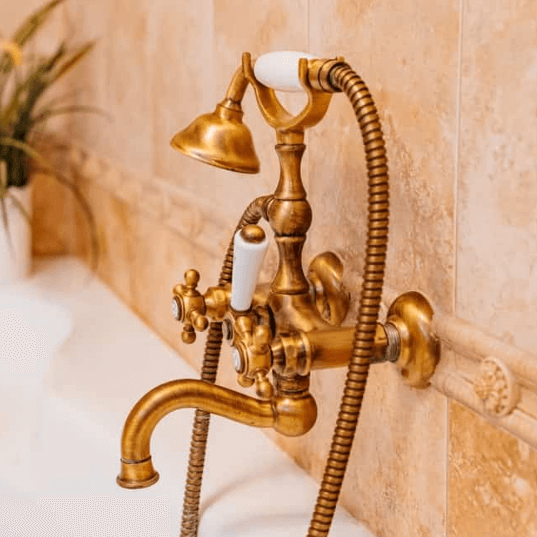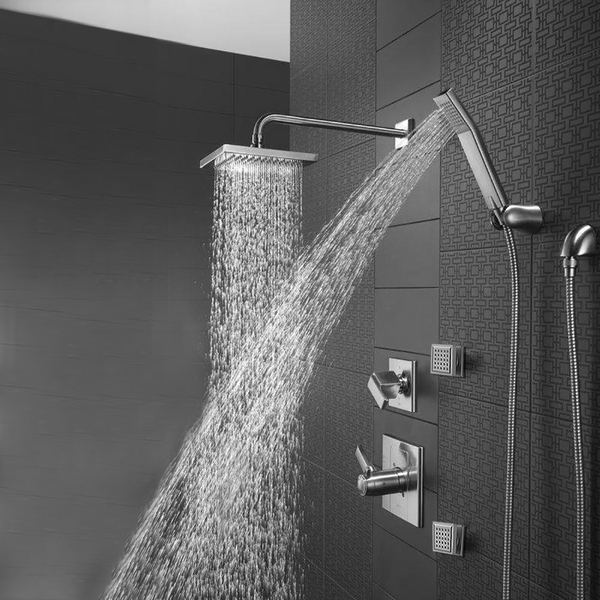The Impact of Faucet Design on Bathroom Aesthetics
Bathrooms are no longer seen as purely functional spaces. Over the years, they have transformed into sanctuaries of relaxation, personal care, and style. Among the many elements that contribute to the aesthetics of a bathroom, faucets often play a significant role. While they may appear as small fixtures, their design and functionality can drastically affect the overall look and feel of the space. This article explores how The Impact of Faucet Design on Bathroom Aesthetics and why choosing the right faucet is crucial for creating a cohesive and appealing bathroom environment.
Setting the Tone with Faucet Design
Faucets are one of the most visible elements in a bathroom. Whether it’s the sink faucet, showerhead, or bathtub spout, these fixtures often draw attention. The design of a faucet can set the tone for the bathroom’s overall theme.
- Modern and Minimalistic Designs: Sleek, geometric faucets with clean lines complement contemporary bathrooms. They emphasize simplicity and sophistication, making the space feel uncluttered and modern.
- Vintage and Classic Styles: Ornate faucets with intricate details, such as those with brushed bronze or polished brass finishes, evoke a sense of timeless elegance. These are ideal for traditional or vintage-inspired bathrooms.
- Industrial and Rustic Trends: Matte black or copper faucets with exposed piping can add an industrial edge or rustic charm, enhancing bathrooms with farmhouse or loft-style decor.
The choice of faucet design directly influences the vibe of the bathroom, making it crucial to align the design with the desired aesthetic.
Material and Finish: A Statement of Elegance
The material and finish of a faucet contribute significantly to its visual appeal. Manufacturers now offer a wide range of finishes, allowing homeowners to select one that complements other elements in the bathroom.
- Chrome: A polished chrome finish offers a timeless, reflective surface that pairs well with almost any bathroom style. It is durable and easy to clean, making it a popular choice.
- Brushed Nickel: This finish provides a softer, matte look that works well in transitional and modern bathrooms.
- Matte Black: Matte black faucets are bold and striking, creating a dramatic contrast against lighter tiles and sinks.
- Gold and Brass: These warm finishes exude luxury and are often used in high-end or vintage-style bathrooms.
- Mixed Materials: Combining materials, such as wood and metal or ceramic and brass, creates a unique, custom look.
The finish of the faucet can either blend seamlessly with other fixtures or become a focal point, adding depth and character to the space.
The Role of Faucet Shapes and Sizes
Faucet shapes and sizes are key considerations for ensuring harmony in bathroom design. The wrong size or an overly elaborate shape can disrupt the aesthetic balance.
- Proportionate Sizing: A large, ornate faucet may overwhelm a small sink, while a tiny, understated faucet may appear out of place on a large countertop. Proportions matter to maintain a cohesive look.
- Shape Variety: Round, curved faucets lend softness to the design, while angular or rectangular ones introduce a sharper, more modern edge. Curved designs often work well with round sinks, whereas angular faucets pair better with square or rectangular basins.
- Wall-Mounted vs. Deck-Mounted: Wall-mounted faucets save space and create a minimalist look, whereas deck-mounted ones offer traditional appeal and flexibility in installation.
Matching Faucets with Bathroom Themes
To achieve a harmonious bathroom aesthetic, it’s essential to match faucets with the chosen theme. Bathrooms can be categorized into several styles, each with specific faucet recommendations:
- Spa-Inspired Bathrooms: Minimalistic faucets with waterfall spouts add a touch of serenity and luxury.
- Traditional Bathrooms: Vintage-inspired faucets with cross handles or porcelain accents fit perfectly.
- Eclectic Bathrooms: Unique, artistic faucets, such as those with sculptural designs or vibrant colors, become conversation starters.
- Industrial Bathrooms: Exposed pipes and raw metal finishes emphasize rugged charm.
By aligning faucet styles with the bathroom’s theme, homeowners can ensure a seamless design that enhances the space.
Impact of Technology on Faucet Design
Technological advancements have transformed faucets from mere fixtures to innovative elements that enhance both aesthetics and functionality. Smart faucets, touchless designs, and LED-lit spouts are now available to create modern, tech-savvy bathrooms.
- Touchless Faucets: These are sleek and convenient, often seen in modern or minimalist bathrooms. They add a futuristic touch while improving hygiene.
- LED Faucets: Faucets with integrated LED lights offer visual appeal and functionality. The color of the light often changes with water temperature, creating a dynamic and engaging element.
- Eco-Friendly Features: Faucets designed to reduce water usage, such as those with aerators or flow restrictors, are not only functional but also appeal to environmentally conscious homeowners.
Technologically advanced faucets merge style with practicality, catering to the needs of modern households.
The Subtle Art of Coordination
Coordinating faucets with other fixtures, such as showerheads, towel racks, and cabinet handles, ensures a unified look. Inconsistent designs or mismatched finishes can create visual discord. For example:
- If the faucet has a brushed nickel finish, matching it with brushed nickel accessories maintains consistency.
- Pairing angular faucets with geometric mirrors and cabinetry reinforces the design theme.
- For eclectic styles, a deliberate mix of finishes and designs can still achieve harmony when done thoughtfully.
Faucet Placement and Ergonomics
While aesthetics are important, the placement and functionality of faucets also affect the bathroom’s overall appeal. Poorly positioned faucets can disrupt usability and create an awkward visual flow.
- Sink Faucets: Ensure that the faucet aligns with the sink’s center and provides adequate clearance for washing hands or filling containers.
- Shower Fixtures: Wall-mounted shower faucets should be placed at an ergonomic height, while rainfall showerheads can be ceiling-mounted for a luxurious feel.
- Bathtub Spouts: These should be positioned to allow even water flow and easy access.
Thoughtful placement of faucets ensures both visual and functional harmony.
Why Faucets Are Worth the Investment
High-quality faucets may come with a higher price tag, but they offer long-term benefits in terms of durability, performance, and design. Investing in a well-designed faucet:
- Enhances the overall aesthetic appeal of the bathroom.
- Adds value to the home by elevating its interior design.
- Reduces maintenance and replacement costs over time.
Choosing a faucet is more than just picking a fixture; it’s about selecting a design element that complements and elevates the entire bathroom.
Conclusion
The impact of faucet design on bathroom aesthetics cannot be overstated. These fixtures are no longer mere functional items but have evolved into statement pieces that define the bathroom’s character. By carefully considering factors like material, finish, size, shape, and technology, homeowners can select faucets that enhance their bathroom’s appeal and functionality. Whether you prefer a modern, minimalist look or a vintage, ornate style, the right faucet design can transform your bathroom into a stunning and cohesive space that reflects your personality and taste.



